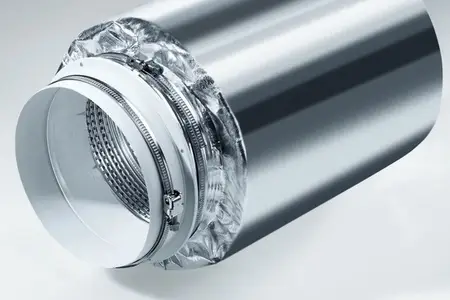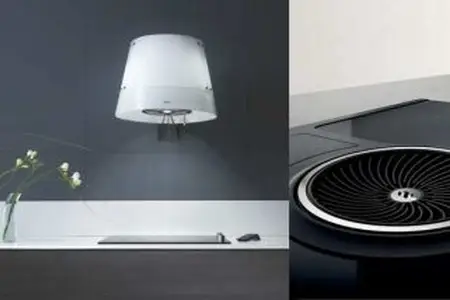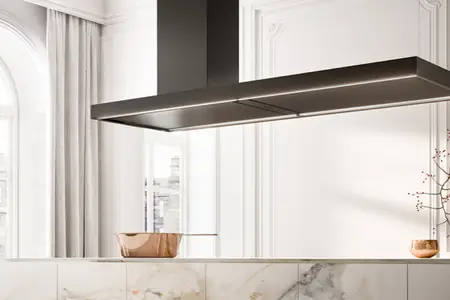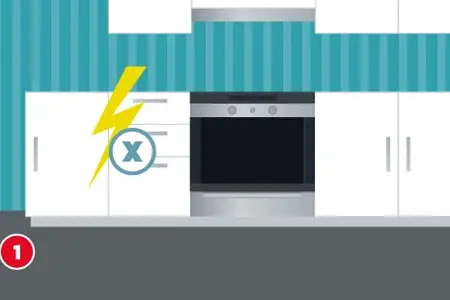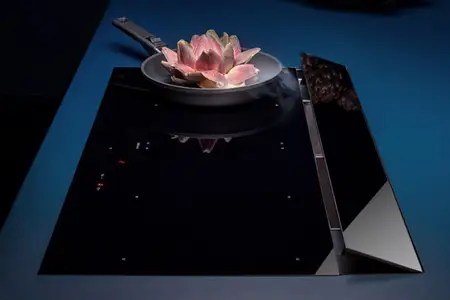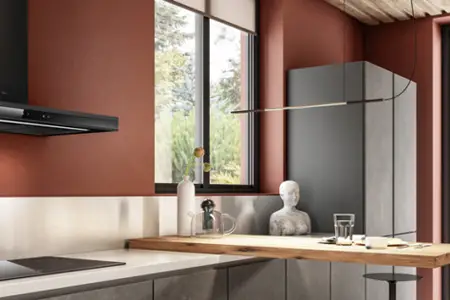Have you ever noticed your cooker hood blowing unpleasant odors back into the kitchen? Or perhaps you’re having problems with cold air entering your home through the hood? The solution to this problem is simple: a check valve. In this article, you’ll learn why this small component is so important, where it should be installed, and how it works.
There are many different manufacturers of check valves, including well-known brands like Naber, Bosch, Miele, and Upmann, offering a wide range of products.
Why is a Check Valve Important?
A check valve is an often overlooked but crucial component when it comes to the efficiency and functionality of your cooker hood. It serves a simple but decisive purpose: it prevents air from flowing back into your kitchen from outside or from the ventilation system. A wall box is also important here, as it supports the installation of the check valve and ensures efficient extraction of kitchen exhaust air.
Benefits:
- Prevention of Odors: Without a check valve, air that has been extracted can flow back into your kitchen – including unpleasant odors. A check valve blocks this path and ensures that exhaust air is only directed outward.
- Energy Efficiency: Especially in winter, cold air can penetrate back into the home through the ventilation system, increasing energy consumption as your heating needs to work harder. With a check valve, cold air stays outside.
- Protection from Moisture: Air flowing back from outside can also bring moisture with it. This can lead to condensation on walls or in the ventilation shaft and cause long-term damage.
- Prevention of Drafts: When the hood is not in operation, a check valve can prevent drafts from entering the kitchen through the exhaust pipe.
- Easy Installation: The check valve can be easily mounted horizontally or vertically on pipes, offering flexibility and user-friendliness.
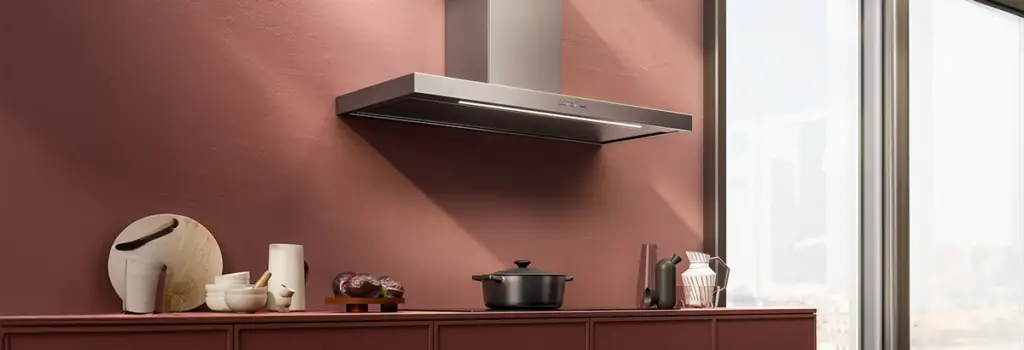
Where Should It Be Installed?
The check valve is integrated into the exhaust system of the cooker hood. There are two main positions where it can be installed:
Directly on the Cooker Hood
Many modern cooker hoods already come with an integrated check valve. If your extractor doesn’t have such a valve, you can retrofit it into the exhaust pipe directly behind the hood. Here, the valve ensures that exhaust air from the kitchen is efficiently directed outside while preventing air from outside from entering the kitchen. The article number of the check valve helps to uniquely identify the specific product and facilitate the purchasing process.
In the Exhaust Duct (External Wall Passage)
Another sensible position for the check valve is at the end of the exhaust duct, where the duct opens to the outside. This position offers the advantage that the valve also prevents cold outside air from entering the duct. This is particularly beneficial in colder regions where it’s important to keep heat inside the house and minimize energy losses.
The availability of the check valve in various sizes and models is guaranteed, ensuring quick delivery.
How does it work?
The operating principle of a backflow flap (also called check valve) is remarkably simple. It consists of a movable flap element that opens in only one direction. When the range hood is switched on and air is directed outside, the flap opens due to the pressure of the outflowing air. As soon as the hood is turned off and the airflow stops, the flap closes by gravity or a spring mechanism, preventing air from flowing back into the room.
The backflow flap is delivered via parcel service, and a tracking number is provided along with the shipping confirmation.
Material
Backflow flaps are typically made of plastic or metal. Metal flaps are often more robust and durable, while plastic flaps are lighter and easier to install. The material of the flap may vary depending on the exhaust system and hood type.
Can a backflow flap be retrofitted?
Yes, a backflow flap can be easily retrofitted if your range hood isn’t equipped with one as standard. Installation can be relatively simple, especially when the flap is installed in the exhaust duct. However, you should ensure that the flap is chosen in the right size to fit perfectly into the exhaust pipe.
If you’re not particularly handy, it’s recommended to consult a professional to ensure the flap is installed correctly and can function fully. The typical delivery time for a backflow flap is 2-3 days.

When is a backflow flap disadvantageous?
For recirculating range hoods
The most common case where a backflow flap is unnecessary or even obstructive involves recirculating range hoods. These systems don’t vent air outside but clean it through activated carbon filters and return it to the kitchen. Since no air is transported outside, a backflow flap is not only unnecessary but can disrupt airflow.
With strong air pressure differences
In households located in particularly windy areas or where there’s a strong difference in air pressure between indoor and outdoor air, a backflow flap can lead to functional problems. Strong external pressure can prevent the flap from closing properly or make it difficult to open. This can impair the extraction performance and make the hood less effective.
In passive houses or with ventilation systems
In energy-efficient buildings such as passive houses or low-energy houses, controlled ventilation is crucial. Here, mechanical ventilation systems ensure constant air exchange. A backflow flap in a range hood could disturb the balance of these systems as it might hinder the controlled airflow. In such cases, it’s advisable to consult an expert about whether a backflow flap is necessary at all.
For Old or Weak Range Hoods
Older or low-powered range hoods may have difficulty generating sufficient pressure to properly open the flap. This means that airflow is restricted, leading to inefficient ventilation. In these cases, installing a backdraft damper can significantly impair the hood’s performance.
When a Flap is Already Present in the Exhaust System
It’s common for range hoods to already come equipped with a flap, or for one to be present in the exhaust pipe, particularly at the exterior wall. In such cases, an additional backdraft damper would be redundant and could even be counterproductive, as two flaps unnecessarily restrict airflow and could limit the hood’s efficiency.
When Should You Skip Installing a Flap?
In summary, there are several situations where you should avoid installing a backdraft damper:
- For recirculating range hoods: These don’t need one since no air is directed outside.
- In extremely windy regions or areas with high pressure differences: Here, the flap can disrupt airflow, affecting hood performance.
- In passive or energy-efficient houses: The backdraft damper can interfere with ventilation systems.
- When your range hood is older or less powerful: Weak hoods may struggle to generate enough air pressure to open the flap.
- When a flap is already present: If a flap is already integrated into the exhaust system, a second one isn’t necessary.
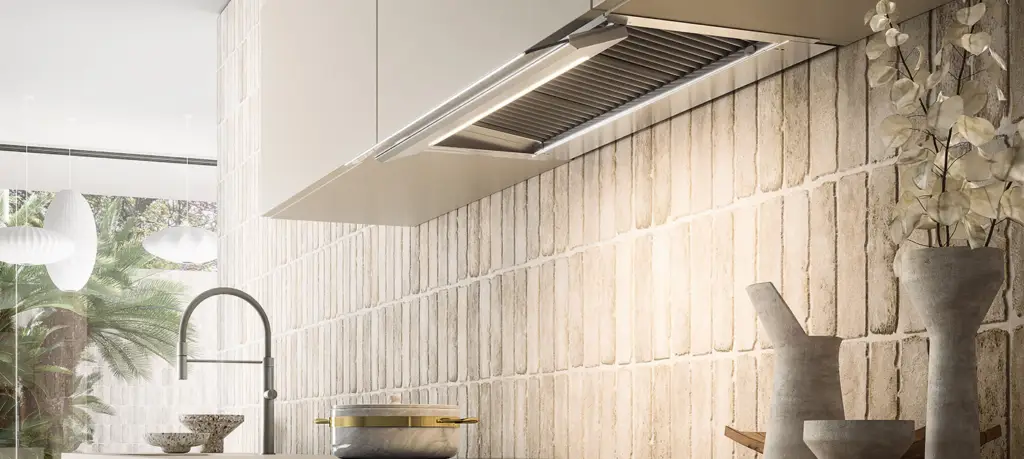
Alternatives
If a backdraft damper isn’t suitable in your case, there are various alternatives you can consider:
Weather-Resistant External Louver
An external louver or louver grid can be a good alternative to a flap, especially for wind-exposed buildings. It prevents wind and weather from directly entering the exhaust system without severely restricting airflow.
Electronically Controlled Exhaust Flaps
Electronically controlled exhaust flaps only open and close when the range hood is operating. This provides precise control over airflow and can be a sensible solution in energy-efficient buildings.
Pressure Sensors
Some modern exhaust systems use pressure sensors to regulate airflow and bypass the need for a flap. These sensors automatically adjust air pressure and prevent drafts or odors from entering the kitchen.
Conclusion:
A backdraft damper is a small but extremely useful component that makes your range hood more efficient and energy-friendly. It protects you from unpleasant odors, cold drafts, and unnecessary energy loss. Whether for new construction or retrofitting – installing a flap is a worthwhile investment to consider.
The next time you’re in your kitchen and turn on the hood, you can rest assured: With a flap, air flows in only one direction – outward!

